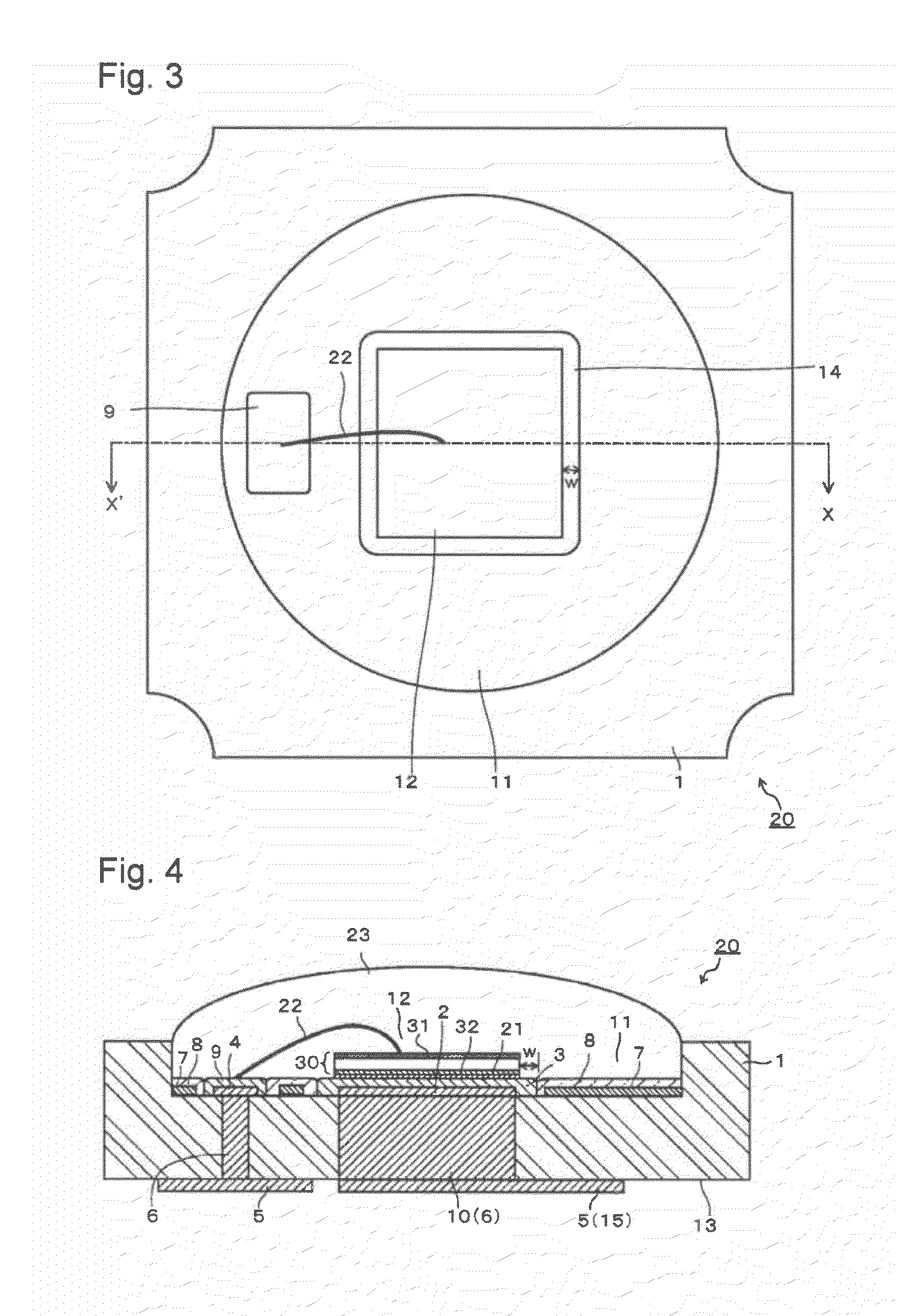Light-emitting device
a light-emitting device and light-emitting technology, which is applied in the manufacture of semiconductor/solid-state devices, semiconductor devices, electrical devices, etc., can solve the problems of deteriorating light intensity, inadequate emission brightness, and increasing heat generation, and achieve excellent light extraction efficiency, high heat dissipation property, and high light reflection efficiency.
- Summary
- Abstract
- Description
- Claims
- Application Information
AI Technical Summary
Benefits of technology
Problems solved by technology
Method used
Image
Examples
example 1
[0137]By the following process, a light-emitting device for test, employing a LTCC substrate having the same structure as in FIGS. 1 and 2 was prepared. Here, in the same manner as above, the same symbols are used for the components before and after the firing.
[0138]Firstly, a main body green sheet 1 was prepared to prepare the main body LTCC substrate 1 of a substrate for mounting light-emitting element. For the main body green sheet 1, raw materials were blended and mixed so that SiO2 became 60.4 mol %, B2O3 15.6 mol %, Al2O3 6 mol %, CaO 15 mol %, K2O 1 mol % and Na2O 2 mol %, and this raw material mixture was put into a platinum crucible and melted at 1,600° C. for 60 minutes. Then, this molten state glass was cast and cooled. This glass was ground by a ball mill made of alumina for 40 hours to obtain a glass powder for substrate main body. Here, ethyl alcohol was used as the solvent at the time of grinding.
[0139]40 mass % of this glass powder for substrate main body and 60 mass...
example 2
[0150]A light-emitting device was prepared in the same manner as in Example 1 except that by using the same glass powder as in Example 1, 38 mass % of this glass powder, 38 mass % of alumina filler (tradename: AL-45H manufactured by Showa Denko K.K.) and 24 mass % of zirconia filler (tradename: HSY-3F-J manufactured by Daiichi Kigenso Kagaku Kogyo Co., Ltd.) were blended and mixture to prepare a glass ceramics composition.
PUM
 Login to View More
Login to View More Abstract
Description
Claims
Application Information
 Login to View More
Login to View More - R&D
- Intellectual Property
- Life Sciences
- Materials
- Tech Scout
- Unparalleled Data Quality
- Higher Quality Content
- 60% Fewer Hallucinations
Browse by: Latest US Patents, China's latest patents, Technical Efficacy Thesaurus, Application Domain, Technology Topic, Popular Technical Reports.
© 2025 PatSnap. All rights reserved.Legal|Privacy policy|Modern Slavery Act Transparency Statement|Sitemap|About US| Contact US: help@patsnap.com



